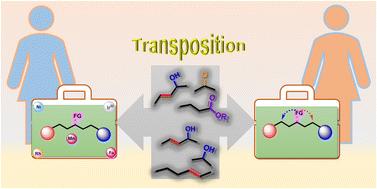利用转位策略在有机合成中构建碳框架的最新进展
Organic chemistry frontiers : an international journal of organic chemistry
Pub Date : 2025-03-22
DOI:10.1039/d5qo00163c
引用次数: 0
摘要
转位反应已成为有机合成中一种强大而可持续的策略,为复杂分子的构建提供了有效的途径,同时对环境的影响最小。这些反应使分子片段的选择性重排,促进了战略性的键断开,从而简化了合成路线并提高了原子经济性。通过减少对高能中间体或专门试剂的依赖,转换方法符合绿色指标的关键原则,促进减少浪费,提高能源效率和可持续性。此外,转位反应通常在温和的条件下进行,使其成为传统合成方法的有吸引力的替代品。由于该领域结构良好的综述有限,我们首先提出了不同类型的转位反应,重点关注催化体系、反应条件和底物特性对效率和选择性的影响,这些影响主要与羰基、烯烃、手性、烯丙醇和官能团转位的个体意义有关。这些反应的多功能性从现成的底物中创造出不同的分子支架,为生物活性化合物、药物和天然产物的合成开辟了新的途径。通过简化合成途径和减少废物产生,转位反应代表了推进更环保,更有效的有机合成方法的有力工具。本文章由计算机程序翻译,如有差异,请以英文原文为准。

Recent developments in organic synthesis for constructing carbon frameworks using transposition strategies
Transposition reaction has remained as the versatile and eco-friendly approach in organic synthesis, providing a sustainable route for generating complex molecules with lower negative impact on the environment. In particular, transposition reaction facilitates selective rearrangement of molecular fragments, which aid the strategic bond disconnections that cover the synthetic pathways and improve the atom economy of the reaction. Moreover, it minimizes the need for high-energy intermediates or reagents, where as in transposition methods support green chemistry principles, including waste reduction, energy efficiency, and sustainability. Besides, transposition strategies render the reaction to occur under mild conditions, making them appealing alternatives to conventional synthetic methods. Due to the limited availability of well-structured reviews in this domain, we first present distinct classes of transposition reactions, with an emphasis on the influence of catalytic systems, reaction conditions, and substrate characteristics on both efficiency and selectivity predominantly relevant to the individual significance of carbonyl, alkene, chirality, allylic alcohol, and functional group transpositions. The versatility of these reactions for creating diverse molecular scaffolds from readily available substrates opens up new avenues for the synthesis of bioactive compounds, pharmaceuticals, natural products and merely represent a compelling tool for advancing greener, more efficient approaches for organic synthesis.
求助全文
通过发布文献求助,成功后即可免费获取论文全文。
去求助
来源期刊
CiteScore
7.80
自引率
0.00%
发文量
0

 求助内容:
求助内容: 应助结果提醒方式:
应助结果提醒方式:


